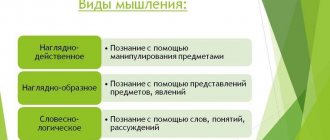Flexible consciousness is the key to peace of mind
One of the points that was written down and framed during the analysis of Dweck's book was: the way you think determines success.
Yes, yes, only the lazy did not talk about this, and yet we continue to step on the same rake, not paying attention to such important little things that, upon closer examination, turn out to be not little things at all. It’s not for nothing that a professor at Stanford University and one of the world experts in the field of motivation draws attention to this problem. It draws attention not just in the article, but in the fundamental work compiled in the book “Flexible Consciousness”.
Agile consciousness is about implicit theories of intelligence and human success based only on a growth mentality: hard work, learning, mistakes and experience. Which is opposed to ordinary consciousness: talents, innate skills. How to form this most flexible consciousness in yourself? Let's listen to what Dweck and we think about this in the format of “10 facts. 3 tasks.”
In short, the theory fits on page A4 and its main theses are very simple:
There are people with a growth mindset and people with a fixed mindset.
The first believe that abilities develop if you put in effort.
The latter are convinced that abilities are given by birth and people are either talented in something or not, and nothing can be done about it.
The first ones succeed in their chosen field because they constantly study, learn from mistakes, take on difficult tasks, are not afraid to make efforts and ask for advice and help from other people.
The latter have difficulty recovering from failures, do not accept criticism, believe that if effort is needed, it means I am not talented enough, they tend to stagnate in development, avoid evaluation and difficulties, and even cheat in order to hide their mistakes or lack of confirmation of talent.
A fixed mindset makes you primarily concerned with how you will be evaluated and develops a sense of superiority over others.
A growth mindset focuses on thoughts of self-improvement and allows you to value what you do, regardless of the outcome.
The book “Flexible Consciousness” (originally Mindset) will appeal to those who learn by example. There are a million of them there. And repetitions.
The book will be difficult for those who expect a clear explanation of the theory and an answer to the question “how?”
If you want something short and to the point, it’s better to read an article on HBR, watch a TED talk and, most interestingly, listen to an interview on Talks at Google.
I liked the interview so much that I’ll add it here right away:
I always wanted to believe that I had a growth mindset, but the unobvious discovery was, firstly, that it changes over time, and secondly, that one person can have a growth mindset in one area of life and a fixed mindset in another at the same time .
A simple example: you can consider your athletic abilities to be developed, but at the same time be convinced that musical abilities are the lot of the elite and a gift from birth.
My recent experience with overcoming impostor syndrome is just one piece of evidence that somewhere I fell into the trap of a fixed mindset with all its consequences. I started reading this book precisely because of him, because I wanted to reinforce the first steps in realizing my limiting beliefs with something before the motivation faded. I read a book for 15 minutes a day, it took a little over 2 weeks.
Here's what I found useful.
What is the essence of the “10 facts” format. 3 tasks”
A few words about what this format is. We have a notebook. You may not have it yet, but it's just a matter of time :). The notebook helps to structure any knowledge obtained from books in such a way that later, after reading, you can highlight the most important thing and apply it in practice. This most important thing is written down in 10 basic facts and 3 real tasks. Hence the name of the section - “10 facts. 3 tasks.” If you don’t have a notebook, then you can make such notes in any format convenient for you: in a notebook, on wallpaper or on your phone. So, let's go...
Flexible consciousness. A new look at the psychology of development of adults and children
Who should read this article?
- For those who want to learn about different mentalities and how they influence our behavior.
- People who want to learn how they can realize their full potential.
Our mentality is formed and it does not matter that we can learn, change and grow
From the shape of your skull to the size of your feet, every physical characteristic of your body is more or less completely determined from the start. Sure, you can have plastic surgery or break a bone, but we humans don't have much control over the functions of our organs.
But what about intellectual and physical abilities, such as playing basketball, drawing, or solving math problems? Are they inherited or learned as we grow older? Today, most scientists agree that if you want to become a famous violinist, you not only need to have an ear for music, but you also need to devote many years of your life to practice.
However, there are many answers to this question because we are talking about people and thinking plays a crucial role in how we see ourselves and others. Simply put, our mentality shapes our beliefs in what we do.
These two extremes form the basis for the concept of a fixed mindset in growing up. People with this mindset believe that they were born with it, that is, gifted. But others with a mature mindset believe that they can become virtuosos of their craft if they work hard.
Thus, people in the latter group continue to develop throughout their lives, acquiring skills and taking an active part in their development. For them, life in all its manifestations is in a constant state of change.
But people with a fixed mindset often allow their black-and-white perceptions to hinder their overall development. If something doesn't work out for them, they immediately retreat or blame others. They hope for everlasting love in their relationship, but do not work on the relationship itself.
An individual's abilities are established at the origins of his fixed mindset
People with a fixed mindset believe that they are the kings of talent. In their opinion, a person’s abilities are established from the very beginning of his path, a person by nature is either smart and talented, or stupid and incompetent, and will remain so.
Large companies like Enron and McKinsey, with their PR departments pouring a ton of money into them, along with the so-called nature institutes, have put this kind of thinking into practice. They hire only people with outstanding abilities, thereby expecting to increase the company's productivity. But since the graduates of the institute are too talented, they receive little training and do not progress at work, and do not grow in their positions.
As a result, their bosses' assessments are quite uniform: Are these graduates as smart as they thought, or do their mistakes indicate that they still lack the talent to get the job?
People with a fixed mindset think that employees who don't perform well from day one will never improve.
Additionally, people with a fixed mindset believe that they can only do what they are naturally inclined to do—a practice they can become proficient at. Since they judge themselves and other people on how good or bad they are, then, in their opinion, those around them do the same. Thus, they feel an urgent need to show how smart and talented they are in any way they can.
They believe that their entire identity is at stake: one mistake is enough to brand themselves as an incompetent fool. They constantly seek approval from others to protect and validate their ego that they are truly as great as they think they are.
Growth and development are possible in flexible thinking
When children with flexible minds are given a difficult math problem at school, they rise to the challenge and want to create even more problems at home than at school. They recognize that the more problems they solve, the more they learn new things.
The limit is when it comes to the possibilities of life for such children. It is very difficult to determine their level of intelligence today, let alone what it will be tomorrow. Of course, their grades reflect their status, but these children are confident that they will learn much more if they get a challenging job where they show dedication and perseverance.
Moreover, they are not interested in getting high grades in order to be better than others; they want satisfaction to push them to the limit of their mental potential. Whether it's music, sports, writing or drawing, they practice tirelessly and are fully aware that only through practice - and sometimes lack - will they be able to improve their skills.
Age-minded people enjoy any opportunity to learn something new. They review and undo strategies previously used and are always thinking about how they can eradicate their shortcomings and weaknesses.
In their relationships, they encourage their partners to continue their studies and work for themselves. When they play sports, they play knowing that they are serving the good of the team. When they run a business, they show respect to employees and ask for their opinion on certain things, but sometimes they can feel awkward. Age-minded people welcome problems and see them as a challenge rather than a definite obstacle. They willingly direct their energy to improve themselves and the world around them.
People with a fixed mindset seek approval from those who seek growth in their mindset.
Lee Iacocca became CEO of Chrysler Motors when the company was on the verge of collapse. Thanks to quick decision-making and good attitude towards employees, he simply brought the company back to life.
After this, his behavior changed dramatically. He began to reap the rewards, flaunt his superiority, and put more energy into his image than into the well-being of the company. His only goal became seeking approval from others.
Iacocca clearly shows a fixed mindset. He classifies everything as either “good” or “bad” and feels superior to others, calling everyone either a winner or a loser. And so he wanted to be a winner, he tried to look smart and talented, instead of looking for ways to improve the company.
Compare this situation with the story of Lou Gerstner, who took over IBM when it was struggling to stay afloat. Plagued by the fixed mentality of the work environment, the company wasted energy on internal divisions instead of focusing on service and collaboration. Everyone was trying to do what was best for them, so the company was not meeting customer needs.
To change this, Gerstner removed some of the hierarchy in the company and emphasized teamwork, rewarding employees who support their colleagues. He also communicates throughout the company, putting himself on the same level as employees. This allowed him to establish personal contact with many employees in a short period of time.
Gerstner's age-based mindset allowed him to create a new work environment based on teamwork and development. The focus on personal success has shifted to joint development. Based on this concept, he was able to bring lasting prosperity to the company.
A fixed mindset sees failure as a natural disaster; age thinking sees them as opportunities
Rejection has dramatic consequences for people with a fixed mindset. Take the example of golfer Sergio Garcia: when he was on a bad streak, he would constantly become depressed. At one point he even blamed his boots for his failure, after which he took them and threw them at an innocent bystander.
People with a fixed mindset do not believe that they can learn from their mistakes. They see any failure as proof that they have lost forever: one defeat gives rise to memories of other failures.
In order to maintain what little they have and their self-confidence, people with a fixed mindset make excuses, cheat, or lose interest in one thing and start another. They don't ask for help or analyze their weaknesses, and they don't try to improve by practicing their skills. They see themselves as a finished product - although it is not a constant process.
Even the fame of basketball player Michael Jordan had periods when there were no goals scored in his career. However, instead of giving up, he practiced throwing over and over again. By the end of his career, he was the best in the business.
It is obvious that he had an age-related mentality. Instead of blaming his team and coach, he looked for ways to improve his skills and his game in general.
He analyzed his mistakes by practicing harder and harder and asking other people for advice. He firmly believed that he could turn his defeat into victory - he had worked very hard until then.
People with a fixed mindset avoid challenges, while people with a growth mindset enjoy them.
There are many things in life that we can achieve only with diligence. However, when people with a fixed mindset are faced with challenges, they see risks because they invest more energy in making excuses than in developing themselves. In addition, they are confident in the enormous power of their natural talent: gifted people do not have to try so hard.
This way of thinking is impossible for people with a fixed mindset; in order to improve themselves, they do not think about their own talent - this is how they avoid difficult situations. They don't want to potentially deceive themselves.
Violinist Nadja Salerno-Sohnenberg exhibited similar behavior. At the age of 10 she was already criticized, and at 18 she was holding the violin incorrectly and her fingers were stiff. Every time she tried to learn something new, she was so afraid of failure that she stopped her violin lessons and then stopped playing altogether.
If actor Christopher Reeve had had the same attitude, he would have been left completely paralyzed from the neck down, as doctors predicted after the accident. However, he had a different mindset: instead of passively accepting his fate, he took control of his situation.
So he diligently completed the training course - and then the impossible happened: contrary to all diagnoses, he began to move his arms, and then his legs, and finally his upper body.
Obstacles give people with age-related thinking the opportunity to carry out full-fledged activities. The more depressed they are about this, the more energy they will direct towards dealing with their failures. Like Reeve, they will strive to make the impossible possible.
Our mentality strongly depends on the imitation model that was laid down in childhood
What factors determine whether a person has a developmental or fixed mindset? What factors determine whether a person realizes or tries to realize his or her potential?
The development of thinking begins from birth. Children come into this world with a mature mindset: they want to learn and develop every day.
The adults in a child's environment - usually his parents - play a huge role in whether the child supports the desire to develop or whether he accepts the choice of a fixed mindset. Simply put, parents set the mentality for their children. Parents with a developmental mindset encourage their children and strongly encourage them to learn, while parents with a fixed mindset always judge their children, telling them what is right and wrong, what is good and what is bad.
Children between the ages of one and three behave accordingly: with age-related thinking, they try to help other children who cry; children with a fixed mindset, on the contrary, irritate him even more.
Teachers are also important role models and influences on children's mentality. There are many teachers who believe that student performance is constant - that good students will continue to do well and weaker students will not. Those who are weaker in quality will have a fixed mindset.
But good teachers are those who firmly believe that their students are capable of learning, that they can handle any situation. They show their students different ways to solve math problems or interpret Shakespeare. Their weak students absorb age-related thinking and begin to achieve higher grades: they no longer feel inherently “dumb.”
Our mentality is not completely predetermined. It can change from childhood onwards as we take into account the moral frame of our key behaviours.
Anyone can develop age-related thinking and make the impossible possible
No one should be a victim of the world around them and the development of their own thinking. The brain can be trained like any other muscle: if we want to have an age-related mindset, we must learn to think that life consists of several steps in time.
Here's an example: you accidentally dropped a plate on the floor. A fixed mindset will make you think, “I’m so clumsy!” But people who are aware of the situation and want to change it can consider their thinking to be age-related, thinking in this case, “Okay, that’s what happened. I'll clean up and be more careful next time."
Working towards an age-based mindset provides a great opportunity to reach out to others for support, to discuss our shortcomings and mistakes in order to implement concrete plans to achieve our goals.
It is important to understand that a fixed mindset is not so hopeless. This will likely become a kind of emotional crutch for a person over the years: it will protect us from failure, create the appearance of acceptance in the eyes of parents and colleagues, and increase our self-confidence. These thoughts comfort us again and again, so getting rid of them is not a comforting option for us.
In fact, it is not necessary to give up a fixed mindset. As long as we accept the prospect of growth in certain situations, this is enough: even if a person believes that he is hopeless when it comes to sports, he can still sit at work all day.
Adopting an age-based mindset in any area allows us to make the impossible possible (Christopher Reeve), and continue to explore our talents and abilities (Michael Jordan). In this regard, age-related thinking is the key to self-realization.
Let's sum it up
People with a fixed mindset hinder their own development through belief in their innate talent and fear of failure. On the contrary, people with an age mentality work and train to eventually realize their full potential. By confronting our own views and ideas, we can develop an age-related mindset.
Practical tips:
How do people differ in their thinking?
- Our mentality is formed, we can learn, change and grow - or not.
- An individual's abilities are established at the root of his fixed mindset.
- In age thinking, growth and development are possible.
What influence does our thinking have on our behavior?
- People with a fixed mindset seek the approval of those pursuing growth with an age-based mindset.
- A fixed mindset sees obstacles as a natural disaster, while an age-based mindset sees failures as opportunities.
- People with a fixed mindset avoid challenges, while people with an age-based mindset enjoy them.
Can we change our thinking?
- Our mentality strongly depends on the imitation model that was laid down in childhood.
- Anyone can develop age-related thinking and make the impossible possible.
Do you want to learn how to choose the right negotiation strategy and become familiar with the main factors influencing the outcome of the negotiation process? Read the article “Psychology of Negotiations” from an expert in the field of marketing psychology.
The most important thing is to monitor the triggers that activate your fixed mindset.
Potential triggers are situations in which your inner voice tells you something like:
- “I’ve never been good at this,” for example, “I’ve never been good at math since I was a kid,” “I’ve always had bad memory”
- “You shouldn’t try this, you’ll look like a complete moron.”
- “I made a mistake, what will people think of me now?”
- “This person is better than me at something, how he infuriates me.”
- “This man is given his sphere so easily! He's just a genius!”
- “This man put so much effort into this project - he clearly doesn’t have it, otherwise he would have done it with ease.”
- “She’s a girl, girls are always worse in the exact sciences”
- “He’s such and such a nationality, where do they get their sense of beauty from?”
This is all the voice of a fixed mindset. He is our enemy, but he is also our teacher on the path to a growth mindset. In what situations do you have these thoughts? How does this make you feel? If you catch these phrases, you can bring awareness into your life and gradually unlearn thinking in this way, replace them with curiosity, questions, attempts to understand and learn.
It’s interesting, by the way, about stereotypes and labels. According to Dweck, stereotypes resonate with people with a fixed mindset. When the label is positive, you are afraid of losing it; when it is negative, you are afraid to confirm it. People with a growth mindset do not care about stereotypes and are not demotivated if someone labels them.











